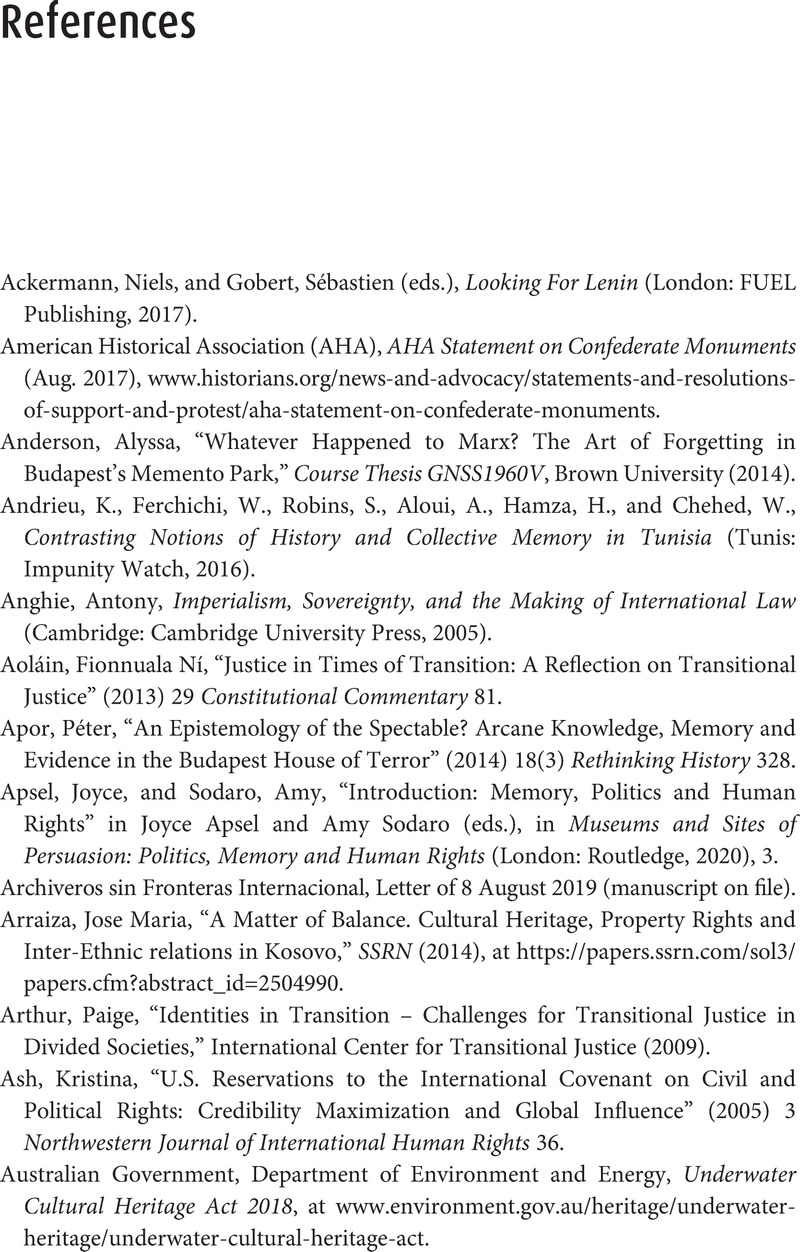Book contents
- Legalized Identities
- The Law in Context Series
- Legalized Identities
- Copyright page
- Dedication
- Epigraph
- Contents
- Acknowledgments
- Cases
- Instruments and Legislation
- 1 Introduction
- 2 Identity, Memory, and Transitional Justice
- 3 Conservation and Reinvention
- 4 Erasing or Replacing Symbols
- 5 Creating New Symbols
- 6 Cultural Heritage As Pragmatism
- 7 Conclusions
- References
- Index
- References
References
Published online by Cambridge University Press: 14 May 2021
- Legalized Identities
- The Law in Context Series
- Legalized Identities
- Copyright page
- Dedication
- Epigraph
- Contents
- Acknowledgments
- Cases
- Instruments and Legislation
- 1 Introduction
- 2 Identity, Memory, and Transitional Justice
- 3 Conservation and Reinvention
- 4 Erasing or Replacing Symbols
- 5 Creating New Symbols
- 6 Cultural Heritage As Pragmatism
- 7 Conclusions
- References
- Index
- References
Summary

- Type
- Chapter
- Information
- Legalized IdentitiesCultural Heritage Law and the Shaping of Transitional Justice, pp. 193 - 221Publisher: Cambridge University PressPrint publication year: 2021



